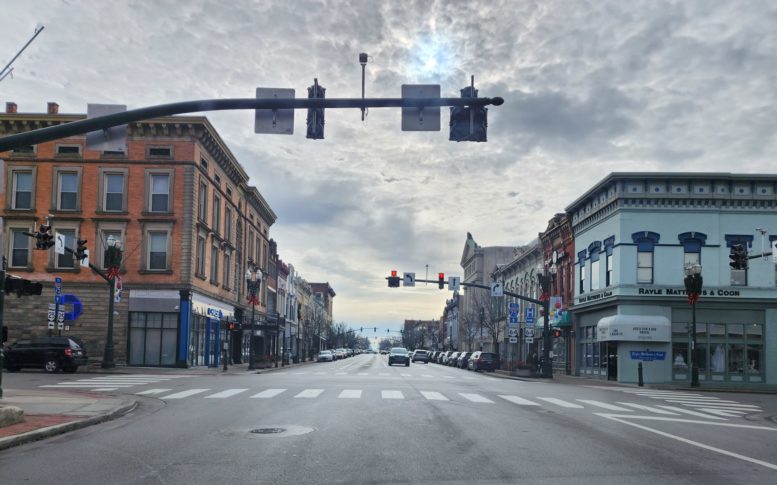By JAN LARSON McLAUGHLIN
BG Independent News
When Ohio was hit by the recession 11 years ago, local governments were told to tighten their belts. Bowling Green and other communities were informed they would receive less funding from the state in order to help Ohio weather the rainy forecast ahead.
But now the sun is shining again, and Ohio has the largest cash balance ever in its Budget Stabilization Fund. The “rainy day” fund is sitting on nearly $3.5 billion.
On Monday evening, Bowling Green officials voted to tell the state it’s time to share the wealth and reinstate the Local Government Fund that was cut during the recession.
Bowling Green City Council voted unanimously in support of a resolution urging Gov. Mike DeWine and the Ohio General Assembly to restore the LGF to pre-recession levels.
“We have helped carry the burden,” Mayor Mike Aspacher said prior to Monday’s council meeting. And now it’s time to share in the prosperity.
The Local Government Fund is a tax revenue sharing mechanism between the State of Ohio and its local governments. The fund dates back to 1934 when the state sales tax was introduced and has long been a pillar of state and local partnership.
“Local communities such as Bowling Green have become really dependent on these funds as a means to provide vital services to their residents,” Aspacher said during the meeting.
The Local Government Funds were traditionally used to support public services provided by the city. Since the recession 11 years ago, the funding losses have added up.
“Bowling Green’s cumulative loss exceeds $6 million,” the mayor said. “It doesn’t take too awful much to think of how those funds would have benefited our efforts.”
During the Great Recession the state reduced the allocation to the Local Government Fund in order to balance its budget.
“The city, along with other local government entities who had long based their financial composition on revenue from the LGF, petitioned fervently in opposition of the reduction when it occurred and has consistently advocated for reinstatement of the funds,” the resolution stated.
Since then, the state’s situation has improved greatly.
“Fast forward over a decade since the reduction and the state’s financial position has changed significantly including a healthy balance in the state’s ‘rainy day’ fund. When the state was in fiscal distress, local governments shouldered a portion of the burden to remedy the financial crisis. That crisis has been resolved and revisiting the allocation at this time is well warranted,” the resolution stated.
Reinstatement of the LGF would significantly enhance the City of Bowling Green’s operating budget, and thus, the city’s ability to provide essential services to its citizens.
“The city has a direct impact on the daily lives of our citizens in providing life-saving, safety, and quality of life services directly to thousands of people on a daily basis,” the resolution stated.
The Ohio Municipal League is asking cities and villages throughout the state to pass similar resolutions.
The Ohio Budget Stabilization Fund is a reserve balance that is set aside during good economic times to protect the state budget from cyclical changes in revenues and expenses that may occur during poor economic times.
But several states are currently sitting on reserves that are at or near record levels after states got unprecedented federal assistance during the coronavirus pandemic while their revenue collections didn’t drop off as much as they feared, according to the Ohio Capital Journal. In 21 states — including Ohio — collections even exceeded pre-pandemic growth.





